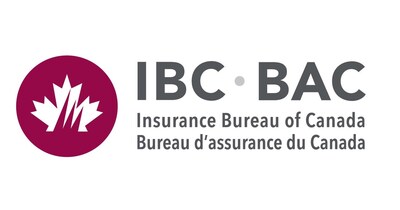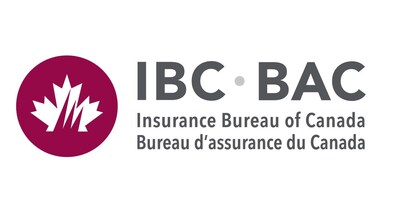Pressures have been mounting on home insurance premiums as residential building construction costs soar by 66% since 2019
Cost compounded by growing frequency and severity of natural catastrophes, affecting insurance affordability
TORONTO, Nov. 28, 2024 /CNW/ – As overall inflation eases in Canada, new data from Statistics Canada shows that the key factors influencing the cost of home insurance remain elevated. Most notably, Statistics Canada’s October Consumer Price Index (CPI) report found that residential building construction costs have soared by 66% over the last five years, vastly outpacing the 19% general inflation rate over that same period.
According to the CPI report, since 2019, in addition to the 66% increase in residential building construction costs (a contractor’s price reflecting the value of all materials, labour, equipment, overhead and profit to construct a new building), Canada has experienced a 24% increase in home replacement costs (the costs to rebuild an entire house from the ground up).
In Alberta – a province hit particularly hard by this summer’s historic severe weather season, including a record-breaking hailstorm in Calgary – home construction costs are exceeding the national average. According to Statistics Canada, the province has experienced a 29% increase in home replacement costs and a 73% increase in residential building construction costs.
“The cost to rebuild a home in Canada is steadily increasing, and this cost increase has been exerting upward pressure on home insurance premiums,” said Liam McGuinty, Vice-President, Strategy, Insurance Bureau of Canada (IBC). “This comes at a time when acute skilled-labour shortages and skyrocketing losses from natural disasters are already having a significant impact on the home insurance landscape.”
IBC notes that rising home input costs, skilled labour shortages and increasing losses from natural catastrophes are having a disproportionate impact on home insurance relative to other lines of insurance business. Since 2019, Canada has experienced a 115% increase in the number of claims for personal property damage, and a 485% increase in the costs for repairing and replacing personal property that has been damaged by severe weather.
“Canada’s insurers are playing a leading role in helping Canadians adapt to the impacts of severe weather and have been calling on all orders of government to take immediate action to mitigate the impacts of natural catastrophes and better protect communities moving forward,” said Craig Stewart, Vice-President, Climate Change and Federal Issues, IBC. “If Canadian governments fail to take decisive action to create more resilient communities, it is expected that pressures on home insurance premiums will continue.”
“IBC has been calling on all orders of government to invest in resilient infrastructure, adopt land-use planning rules that ensure homes are not built on flood plains and in high-risk wildfire zones, and implement building codes that better protect homes and livelihoods,” added Stewart. “The only way to help foster a more sustainable home insurance market is to take concrete action on the risks facing Canadians from coast to coast.”
Diving deeper – cost pressures on home insurance
- Rising input costs in the cost of rebuilding: Statistics Canada’s October inflation report revealed growing greater-than-inflationary increases in home replacement costs and residential building construction costs over the last five years. The increases are even higher in Alberta, a province that has been particularly hard hit by natural catastrophes this year.
- A shortage of skilled labour: Labour shortages in the construction industry have had a negative effect on the amount of time and cost to replace or repair insured properties. According to a March 2024 report by BuildForce Canada, between 25,000 and 28,000 workers in the construction industry are expected to retire every year until 2033. Yet, construction demands over the same period will require the labour force to expand by 88,400 workers. Without rapid growth in this labour sector, the supply of skilled workers will fall short of construction demands.
- Skyrocketing losses from natural disasters: Severe weather events in 2023 caused over $3.5 billion in insured damage in communities across Canada, making it a year with one of the highest annual totals in the previous four decades. In 2024, insured losses have already surpassed $7.8 billion, which will make this the costliest year for insured losses in Canadian history.
About Insurance Bureau of Canada
Established in 1964, Insurance Bureau of Canada (IBC) is the national industry association representing Canada’s private home, auto and business insurers. Its member companies make up the vast majority of Canada’s highly competitive property and casualty (P&C) insurance market.
As the leading advocate for Canada’s private P&C insurers, IBC collaborates with governments, regulators and stakeholders to support a competitive environment for the P&C insurance industry to continue to help protect Canadians from the risks of today and tomorrow.
IBC believes that Canadians value and deserve a responsive and resilient private P&C insurance industry that provides insurance solutions to both individuals and businesses.
For media releases, IN Focus articles, or to book an interview with an IBC representative, visit ibc.ca. Follow us on LinkedIn, X and Instagram, and like us on Facebook. If you have a question about home, auto or business insurance, contact IBC’s Consumer Information Centre at 1-844-2ask-IBC. We’re here to help.
SOURCE Insurance Bureau of Canada

![]() View original content to download multimedia: http://www.newswire.ca/en/releases/archive/November2024/28/c8904.html
View original content to download multimedia: http://www.newswire.ca/en/releases/archive/November2024/28/c8904.html
© 2024 Benzinga.com. Benzinga does not provide investment advice. All rights reserved.





Leave a Reply